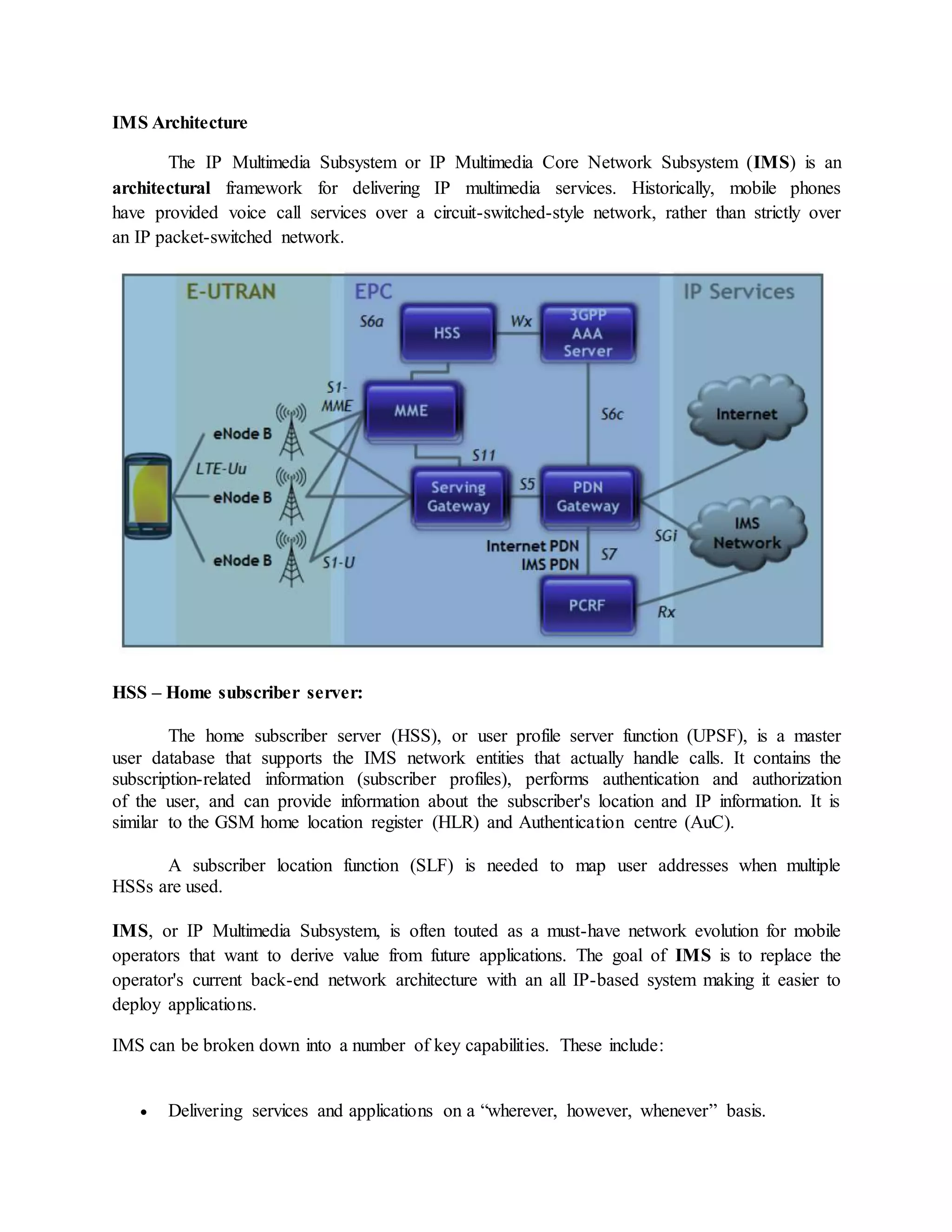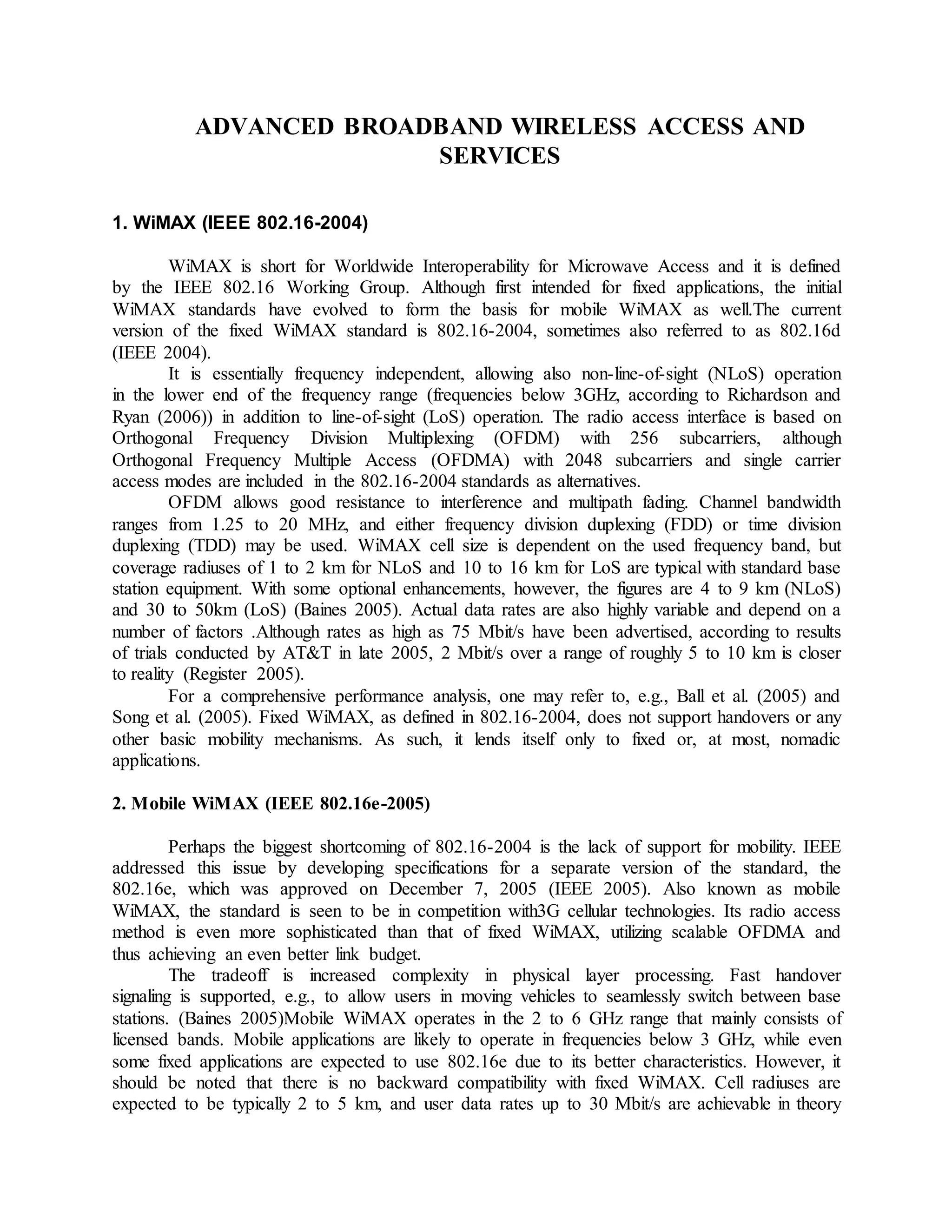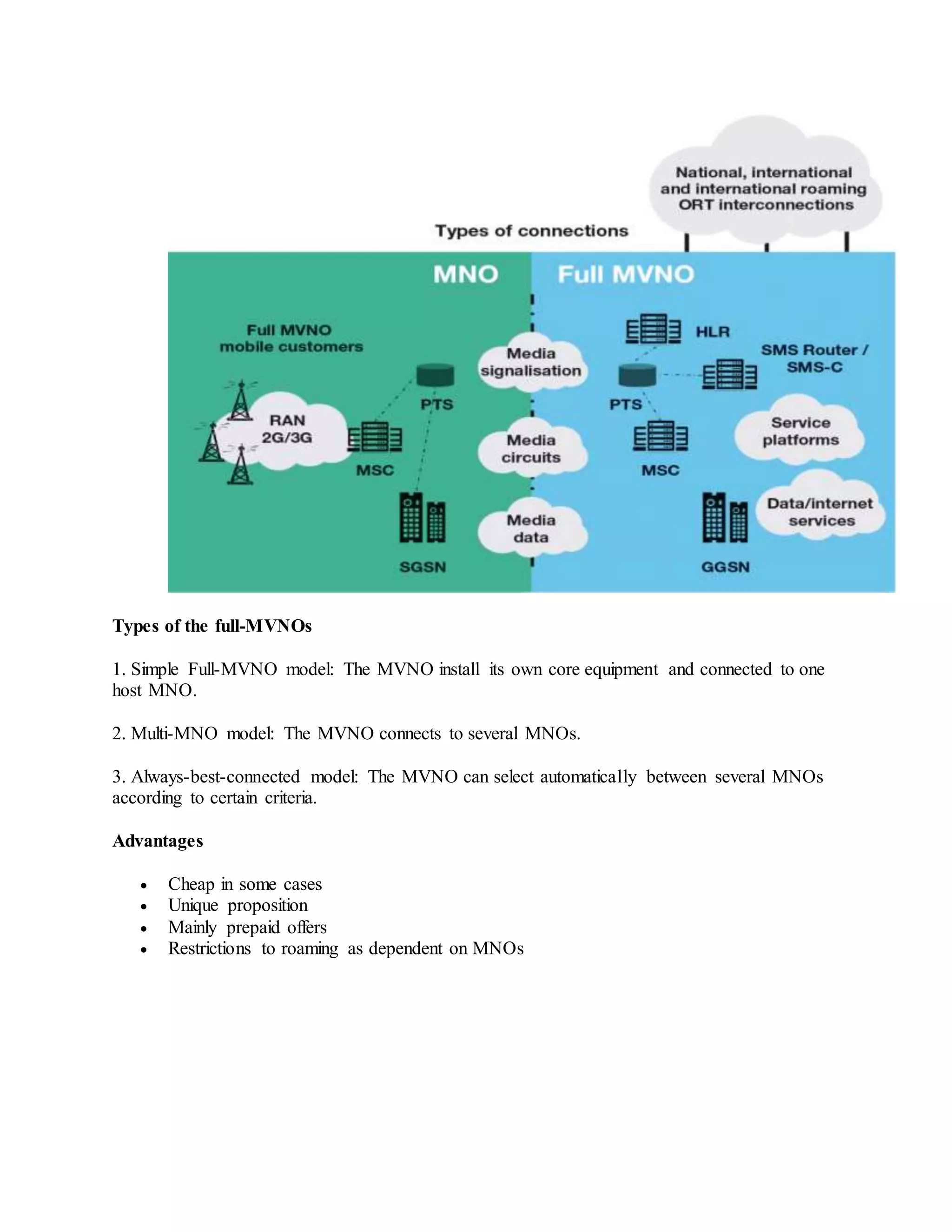Multicarrier modulation is a technique for transmitting data over multiple carriers. It has advantages like resilience to interference and fading. One form is OFDM, which divides data over multiple orthogonal subcarriers. This avoids interference between carriers. OFDM is widely used in wireless technologies due to its spectral efficiency and resilience to multipath effects. Smart antennas and MIMO are techniques that use multiple antennas to improve wireless communication capabilities. IMS is an architectural framework that delivers multimedia services over an IP network for mobile phones. It contains elements like the HSS user database.
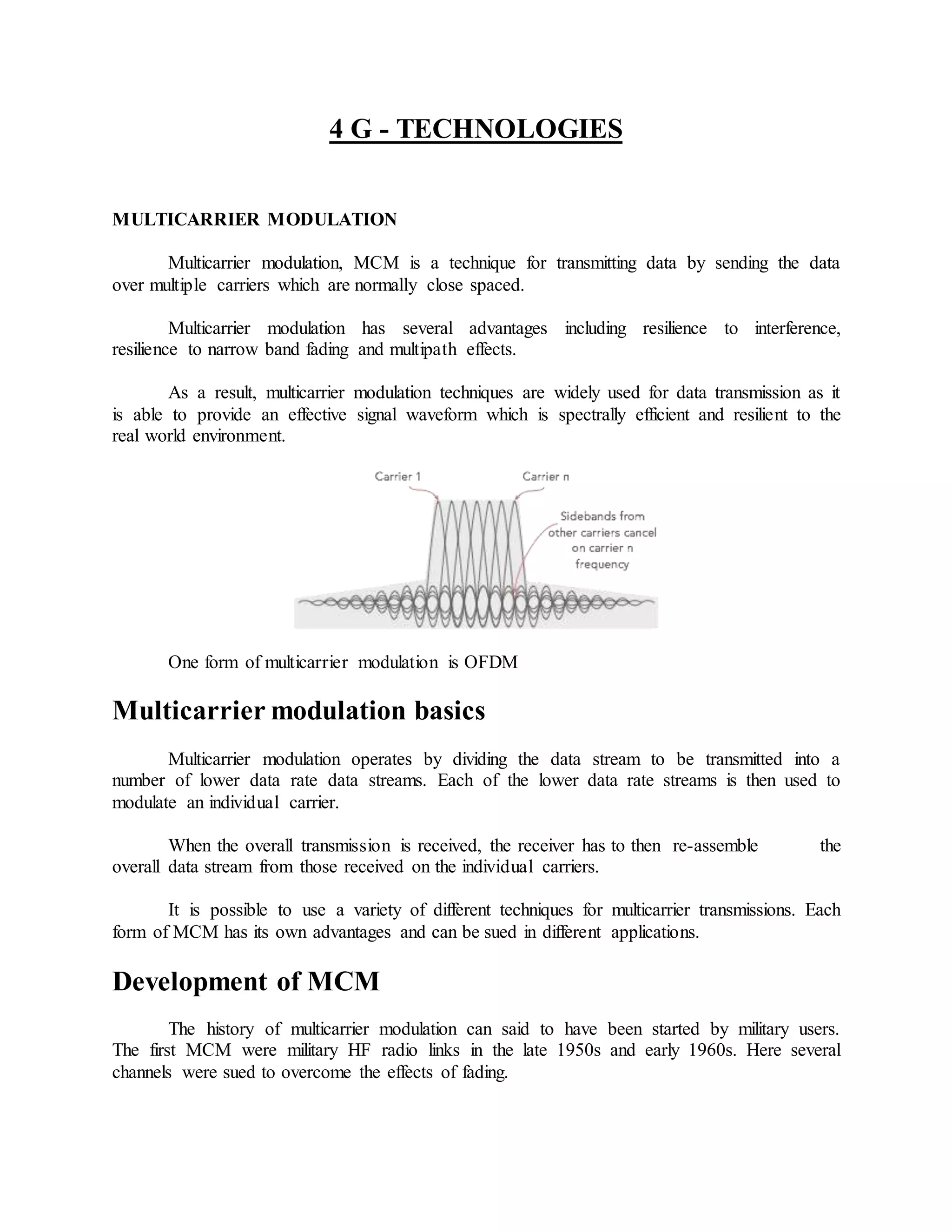
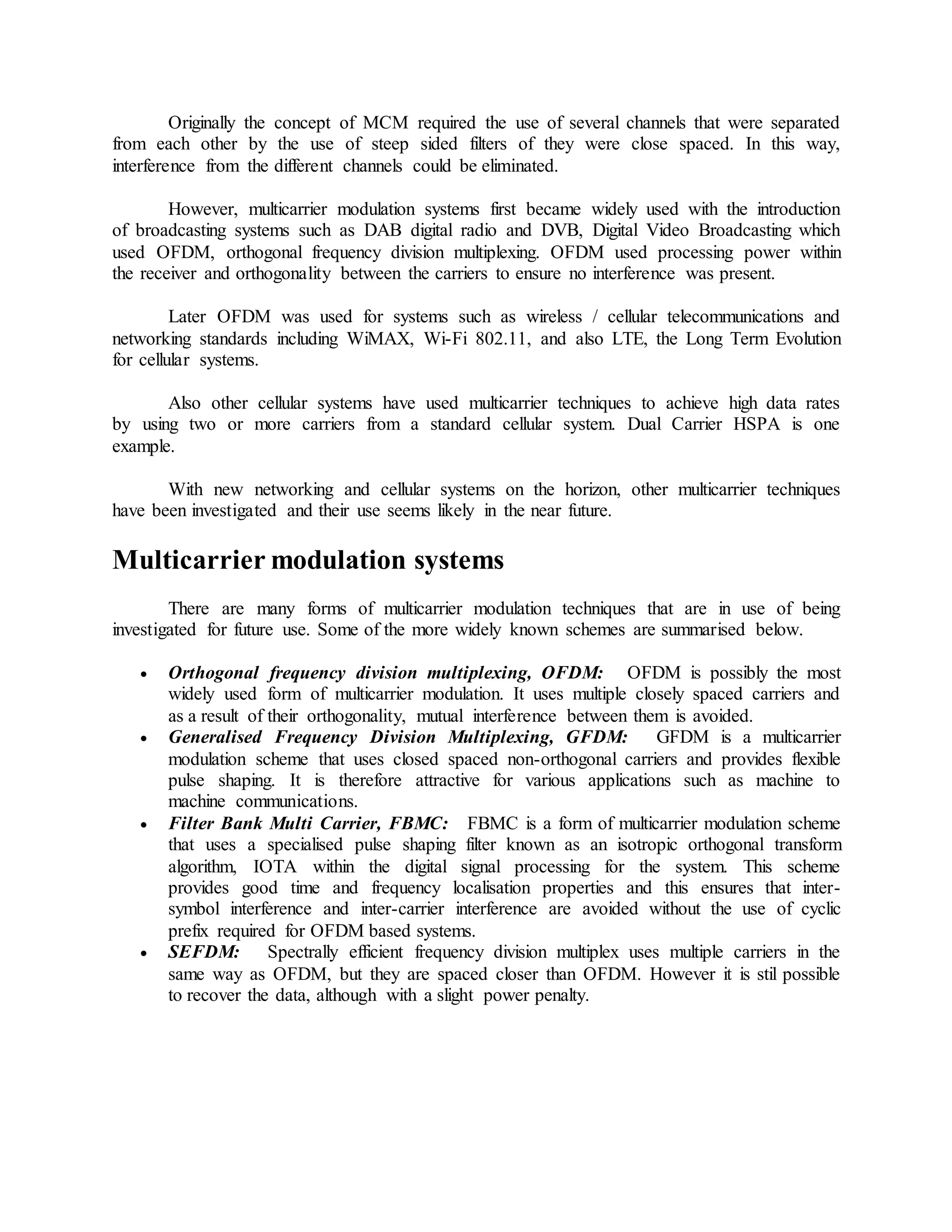
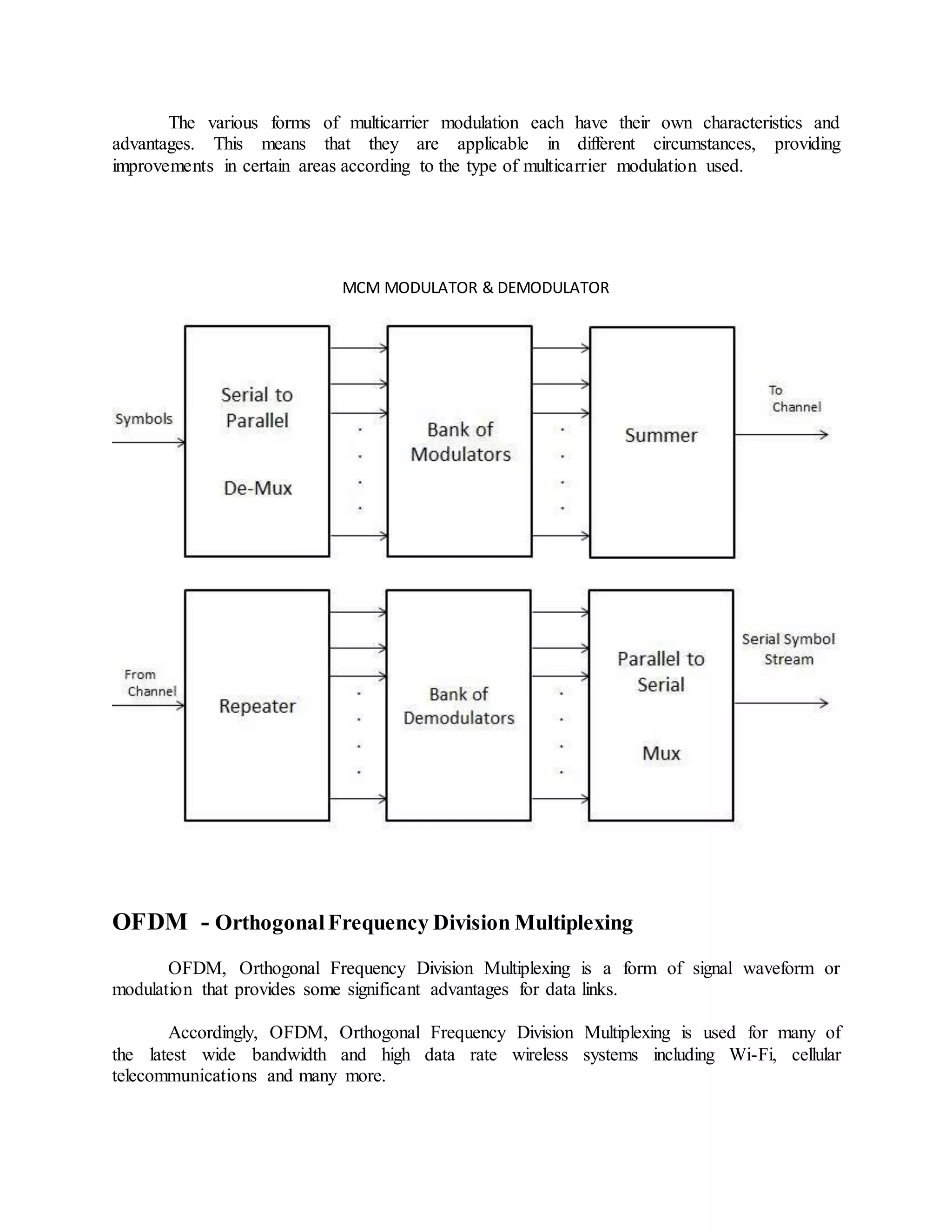





![Spatial multiplexing requires MIMO antenna configuration. In spatial multiplexing,[33] a high-
rate signal is split into multiple lower-rate streams and each stream is transmitted from a
different transmit antenna in the same frequency channel. If these signals arrive at the receiver
antenna array with sufficiently different spatial signatures and the receiver has accurate CSI, it
can separate these streams into (almost) parallel channels. Spatial multiplexing is a very
powerful technique for increasing channel capacity at higher signal-to-noise ratios (SNR). The
maximum number of spatial streams is limited by the lesser of the number of antennas at the
transmitter or receiver. Spatial multiplexing can be used without CSI at the transmitter, but can
be combined with precoding if CSI is available. Spatial multiplexing can also be used for
simultaneous transmission to multiple receivers, known as space-division multiple access or
multi-user MIMO, in which case CSI is required at the transmitter.[34] The scheduling of
receivers with different spatial signatures allows good separability.
Diversity coding techniques are used when there is no channel knowledge at the transmitter. In
diversity methods, a single stream (unlike multiple streams in spatial multiplexing) is
transmitted, but the signal is coded using techniques called space-time coding. The signal is
emitted from each of the transmit antennas with full or near orthogonal coding. Diversity coding
exploits the independent fading in the multiple antenna links to enhance signal diversity. Because
there is no channel knowledge, there is no beamforming or array gain from diversity coding.
Diversity coding can be combined with spatial multiplexing when some channel knowledge is
available at the receiver.
Multi-antenna types
Multi-antenna MIMO (or Single user MIMO) technology has been developed and implemented
in some standards, e.g., 802.11n products.
SISO/SIMO/MISO are special cases of MIMO
o Multiple-input and single-output (MISO) is a special case when the receiver has a
single antenna.
o Single-input and multiple-output (SIMO) is a special case when the transmitter
has a single antenna.
o Single-input single-output (SISO) is a conventional radio system where neither
transmitter nor receiver has multiple antenna.](https://image.slidesharecdn.com/wirelessnetworks-4gandbeyond-200627193318/75/Wireless-networks-4G-Beyond-9-2048.jpg)
